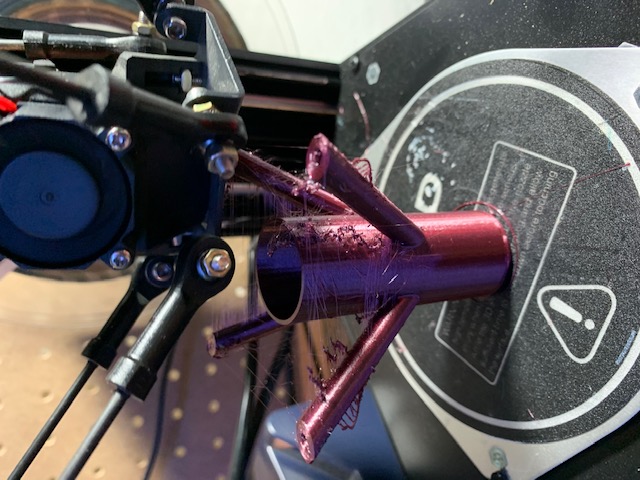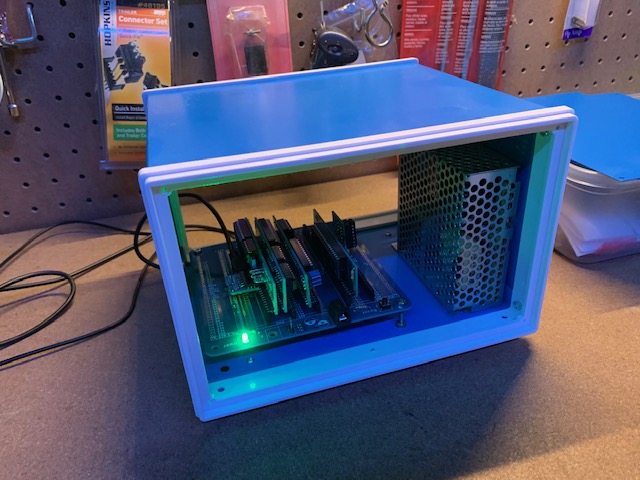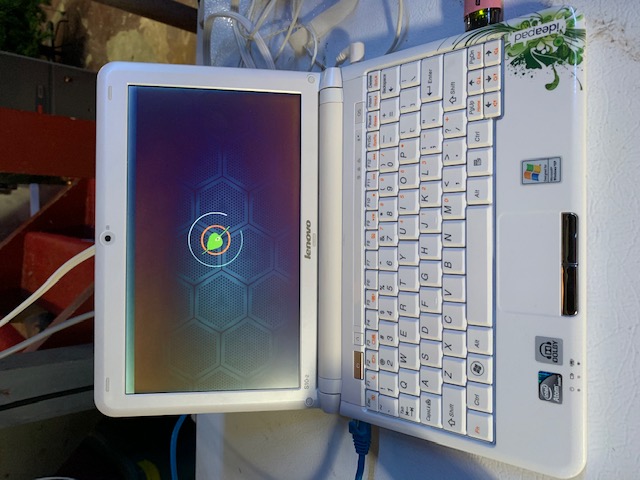Remember when I was going to do a monthly project update post?
Art Robot
Inspired by an [ Instructable ](https://www.instructables.com/id/Keyboard-Cap- Micro-Watercolor- Bots/?fbclid=IwAR0zQpwetNXr9D5MhwD8bBRzSKX0TH9xE2lcL7C9NRhtkppb_MGPESwVVI8) Jamie found, We’ve started working on a printable version of the cobbled-together robots described in the article. I’m designing the model to be parametric so it can easily accommodate whatever parts you can get your hands on.

So far the first iteration needs some adjustment to the tolerances to work with the motors, batteries, etc. that I have on-hand but another iteration or so and we should have something to test in the studio.
RC2014
I finished enough of my RC2014 kit to boot it and run some BASIC code! There’s still plenty of more soldering to do to get all the parts working, but I took a break from the electronics long enough to start putting together a protective chassis.

You may recognize the box as similar to the one I used for my [ RAIN Mark II Supercomputer Trainer ](https://hackaday.io/project/85392-rain-mark-ii- supercomputer-trainer) project, however this one is slightly taller and has a removable cover which I choose to make adding and removing boards from the backplane easier.
I’m also working on a custom front panel similar to the RAIN design that will include switches and LED’s to expose the features of the [ Digital IO Module ](https://www.tindie.com/products/semachthemonkey/digital-io-module-for- rc2014-z80-homebrew-computer/) .
Linebird
This is another one Jamie came up with. So far we’ve done the first step of the proof-of-concept and I expect to finish enough of it to do some field testing in the next week or two.
Once we know whether or not it could work, we’ll share more about it. For now I’ll mention that it’s been fun to have an excuse to experiment with Micropython again and learn more about embedding and interfacing with the ESP32 .
Bike Computer
I’ve looked at several ways to add some instrumentation to my Super73 Z1 but nothing I’ve found is a good fit for the bike. I’ve looked at using my phone with a mount but it’s hard to read in full sun, and I’m not sure that it’s the safest thing for my phone.
I gave some thought to what would meet my needs while also being safe to use and fit well on the bike and I came up with the idea for an interface based on a single mechanical gauge.
So far I’ve sketched-out a few design ideas and created a repository for the project. I plan to build a prototype for myself from off-the-shelf parts, but if there’s any interest in the device from others I’ll design something more suitable for small-scale mass production.
GitHub Migration
Speaking of repositories, for reasons I explained earlier earlier I’ve been slowly moving all of mine to Github, and it’s been an educational process.
For the majority of my repositories it’s been easy, but for the remaining ones it’s getting exponentially more difficult. A couple refuse to be pushed, with the other end “hanging up” after running for hours. Perhaps worse are repositories that are half in one place and half in another. These have to be merged manually to make sure I’m not loosing changes by mixing up the timeline.
Speaking of loosing things, somehow I managed to loose at least one repository along the way, sadly one containing a manuscript for one of the books I was closest to finishing.
OffGRID
I got an email out of nowhere from someone who came across one of my OffGRID posts and it inspired me to dust the thing off and get it ready for summer. I was somewhat disappointed the last time I worked on it because my attempts at adding solar charging were thwarted by inconveniences inherent in the stock charging system. After a few attempts I decided it didn’t make sense to fight with it and turned my attention to working with more modern hardware.

But that beautiful Pixel Qi display, there’s nothing like it for working outdoors and I’ve yet to find a way to interface it to the modern SOC-based machines I’ve been building with.
So instead of trying to make it do more, I decided to simply make the most out of the hardware as-is, and find a Linux distro that suits it. I’ve found a good fit in Bodhi Linux . I’ll do a more in- depth review soon, but for now it seems like a great fit for this little machine and I’ve already been taking advantage of it to revive the writing project I’ll talk about next.
How to Hack
While migrating repositories I had a chance to revisit many unfinished projects and among those several books. How to Hack is one that I’ve made several attempts to write, but failed to complete and had kind of forgotten about over the last few years.

I was surprised to find that the book is fairly complete. I’m not sure why I didn’t wrap it up other than simply getting busy with other things.
Having revisited the manuscript I’ve already started to make some edits and come up with some ideas on how to wrap things up. The timing is fortuitous because as I mentioned earlier, OffGRID is operational again which means I can work on the book while enjoying the increasingly pleasant Wisconsin weather. I don’t want to jinx the project by committing to a specific date, but I can imagine finishing the writing over the summer and perhaps having it in publishing shape by the fall.
Mark your Xmas lists kids.
